Whetstone Park is a 136 acre community park in the Clintonville neighborhood of Columbus, OH. The land was originally a family farm in the early 1800s, but was purchased in 1944 by former mayor James A. Rhodes. The land was converted into a park for victory gardens during World War II. Over 500 victory gardens were planted. Today, Whetstone Park combines community amenities and natural beauty. I focused my survey on the ravine that runs laterally through the park. A creek runs through the bottom of the ravine, and the surrounding banks and hills are covered in lush greenery. Let’s explore some of that greenery and see what species call this ravine home!

Map of Whetstone Park. The ravine is the black squiggle passing laterally through the park.
One of the first plants I looked for is an important one to be aware of whenever you’re outside. This is poison ivy (Toxicodendron radicans). Luckily it’s not too difficult to identify. Poison ivy occurs most commonly as a shrub or a vine, and it has alternate, trifoliate leaves. The margins of these leaflets sometimes have irregular, rounded teeth. The middle leaflet has a longer petiole, or stalk, than the adjacent two leaflets. Poison ivy produces an oil that can cause a very irritating skin rash, and cause serious allergic reactions in certain people. Fun fact, rubbing the sap of jewelweed (Impatiens capensis) can be used as a remedy for poison ivy rash! But it’s probably best to avoid it in the first place. Just remember, “leaves of three, let it be!”
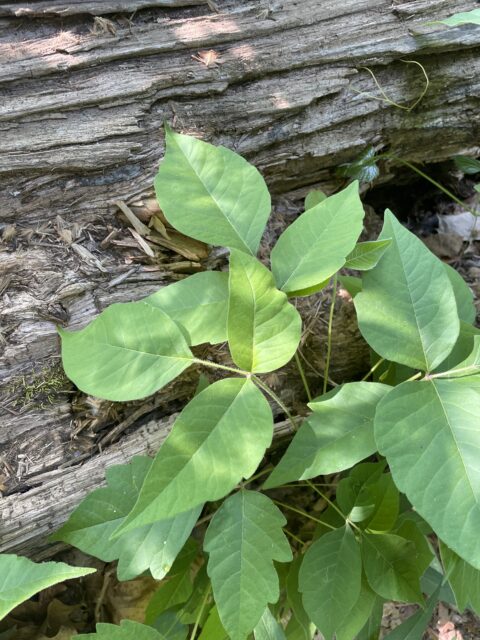
Next I sought out something a little more safe, wildflowers. The first one I came across was a member of the Lamiaceae, or mint family. This is Glechoma hederacea, common name gill-over-the-ground. It has irregular (zygomorphic) flowers. Like many other mints, its petals are fused into two “lips.” The gynoecium is epogynous and syncarpous. I found this particular plant on the side of the dirt path leading into the ravine. The inflorescence is solitary and emerges from the leaf axils. The fruit is 4 nutlets produced from the syncarpous ovary.
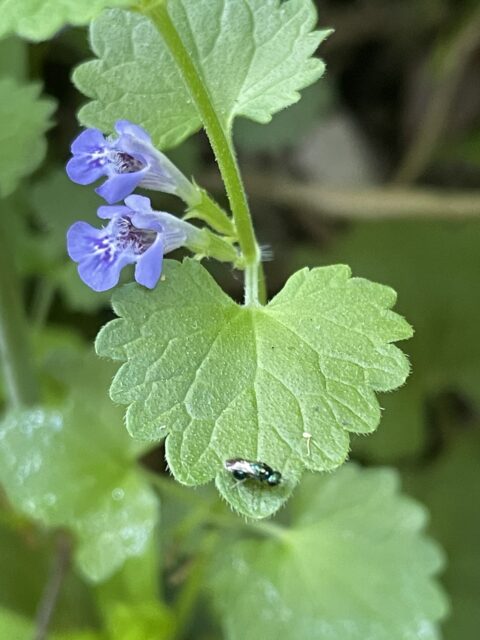
The next wildflower I found was one I recognized from our Deep Woods trip. This is Polygonatum biflorum, or smooth Solomon’s seal. Unfortunately this one was no longer in bloom, but I can describe the flowers anyway. The flowers dangle from the axils of the leaves. They are actinomorphic (radially symmetric), and the petals are fused and separate about halfway up the flower. The gynoecium is epigynous and syncarpous. I found this plant in the valley of the ravine, further along the trail. The inflorescence is an indeterminate raceme. The fruit is a bluish-black berry.
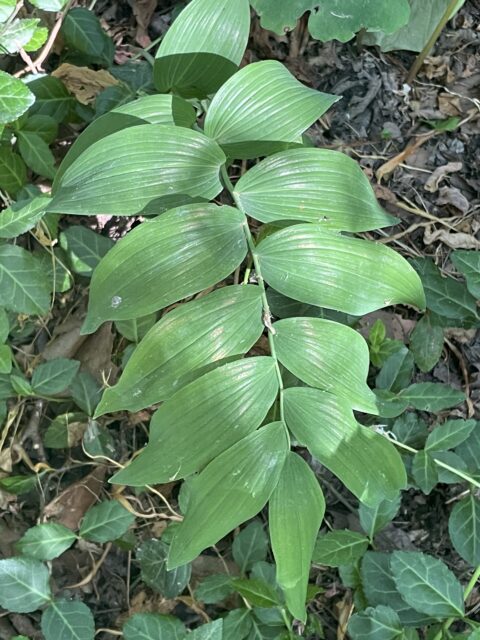
Towards the very end of the trail I spotted these cute little violets. This is Viola striata, the striped white violet. The inflorescence is solitary scapose, producing zygomorphic white flowers with unfused petals, and a hypogynous, syncarpous ovary which will produce a capsule.
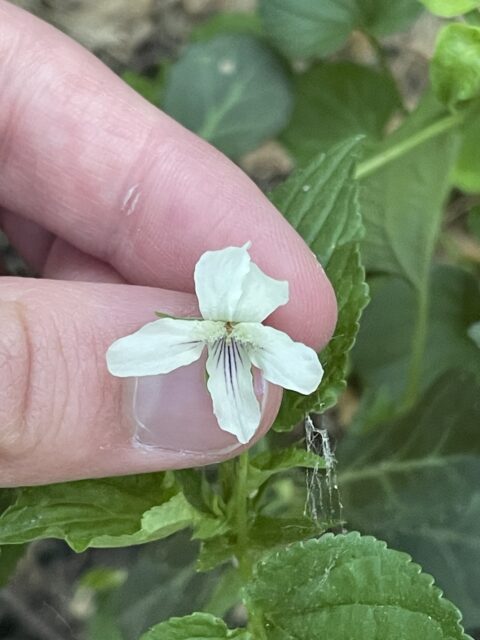
Near the violets I spotted a cluster of yellow flowers. This is Medicago lupulina or black medick, a member of the Fabaceae family. The flowers are zygomorphic and butterfly-like, emerging in an umbel. The bottom two petals are fused, but only at the tip. The gynoecium is unicarpellate, epigynous, and produce a legume.
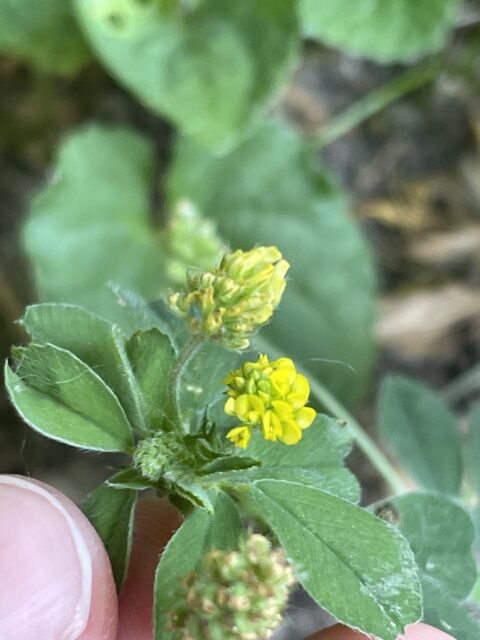
Unfortunately, like many natural areas, this ravine was hardly free of invasive species. Right when I entered I came across a multiflora rose bush (Rosa multiflora). This member of the rose family is native to Korea, China, and Japan. Its preferred habitat is sunny or semi-shaded with well-drained soils, but it can tolerate a wide range of habitats, making it a ubiquitous problem. Mechanical removal is most effective on small plants. Herbicides like Roundup or Glypro are effective when applied directly to the foliage. Biological control using the rose rosette virus and the European rose chalcid have also been suggested, but concern is raised regarding their effect on other rose species.
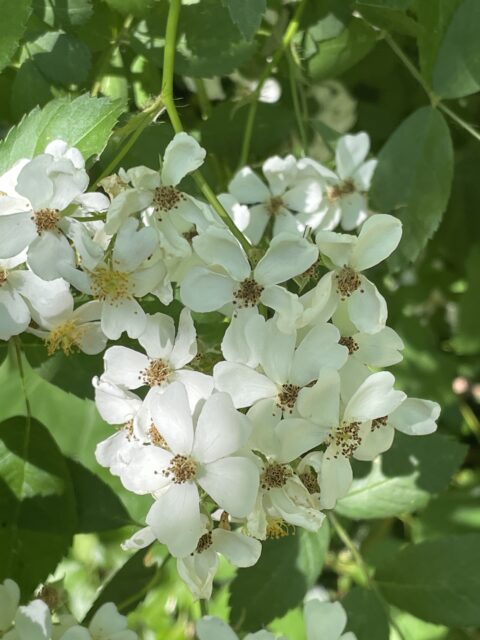
The next invasive I found was garlic mustard (Alliaria petiolata). This herb is native to Europe and colonizes shady areas in mesic uplands, floodplain forests, savannas, pastures, and forest edges and streams. Mechanical removal like hand pulling is effective on small infestations. Prescribed fire in late spring can be more effective on large populations, especially if done over several years. Application of herbicides is effective, making sure care is taken to spray all plants throughly. Researchers at Cornell are studying four weevil species to study their biocontrol effectiveness on garlic mustard.

This plant is a personal least favorite of mine, tree-of-heaven (Ailanthus altissima). This tree is native to China, and in Ohio it thrives in disturbed soils (including urban areas), and pretty much any habitat that isn’t a wetland. Young seedlings must be pulled up, cutting is ineffective as the plant will produce root suckers and grow elsewhere. The most effective control is selective herbicide application to either the foliage, cut stems, hack-and-squirt, or the base of the bark. To be most effective, the herbicides require a sticking agent. Ailanthus we webworm feeds exclusively on tree-of-heaven and may be an effective biocontrol agent.
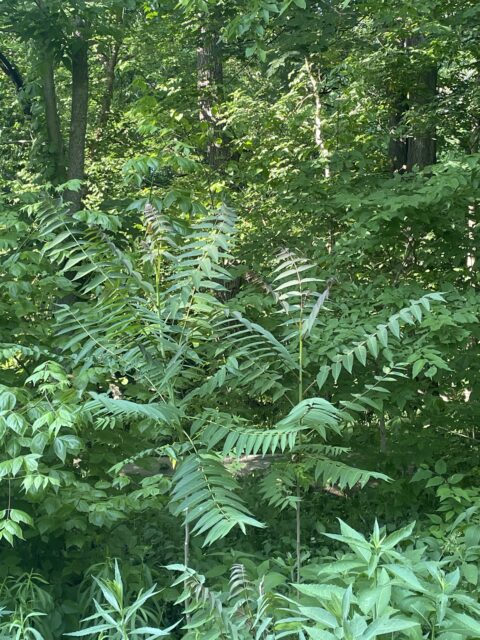
This is European privet (Ligustrum vulgare). It is native to Eurasia and Africa and colonizes undisturbed forest. I found this bush deeper into the ravine, which tracks. Hand pulling can be effective on small plants but mechanical control usually isn’t enough and herbicide application is recommended, applied either to the foliage, basal bark, or cut stem.
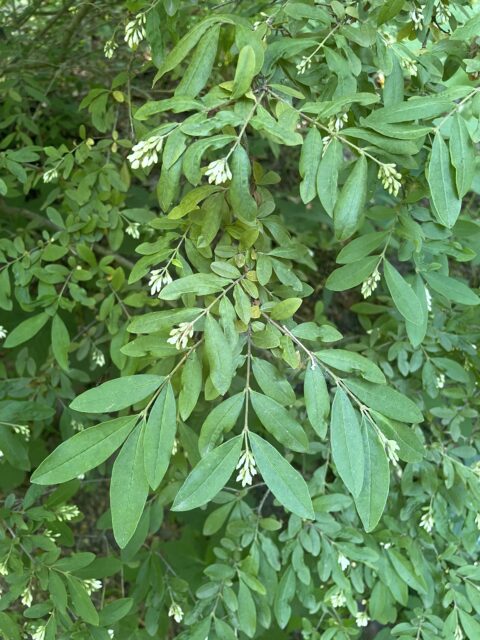
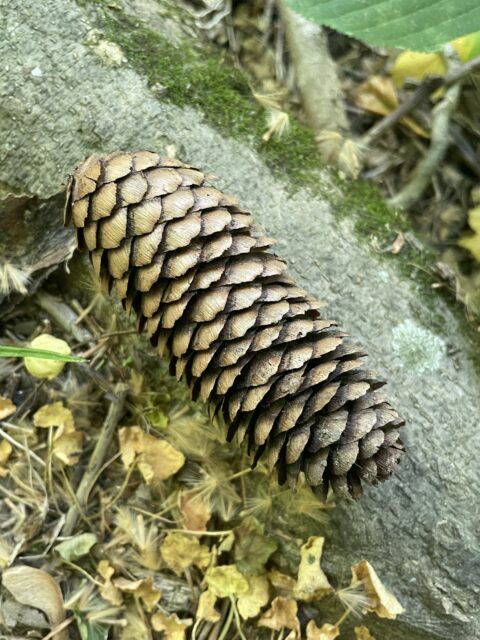
Since this is a cone, I can immediately identify it as having come from a conifer. This came from a Norway spruce, a commonly planted ornamental. The scales are tight, and the cone is large and cylindrical.
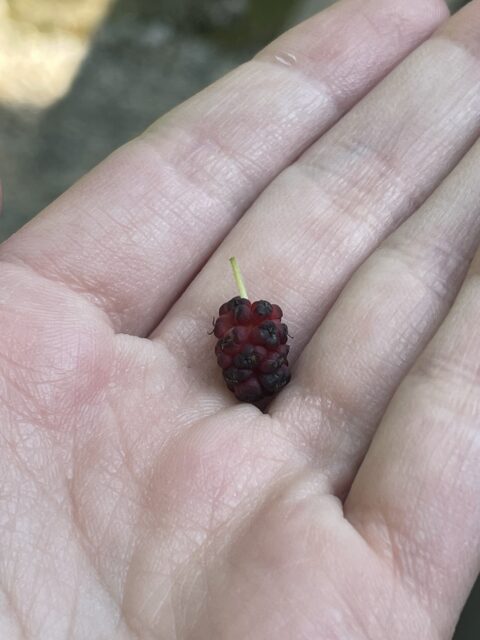
This is the fruit of a white mulberry. Mulberry fruits are a multiple of drupelets. I made most of the identification based on the foliage, which are alternately arranged serrated leaves that occasionally have deep lobes. The fruits start out a yellowish green but ripen to this deep purplish red as you can see here.
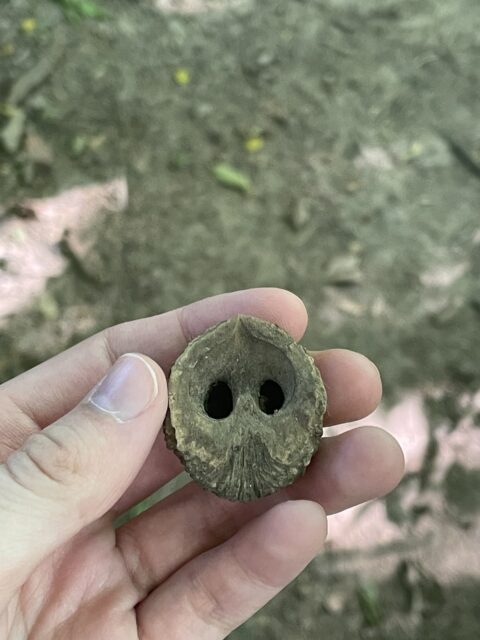
This is the nut of a black walnut. To me these are quite easy to identify because they look like the snout of a pig.
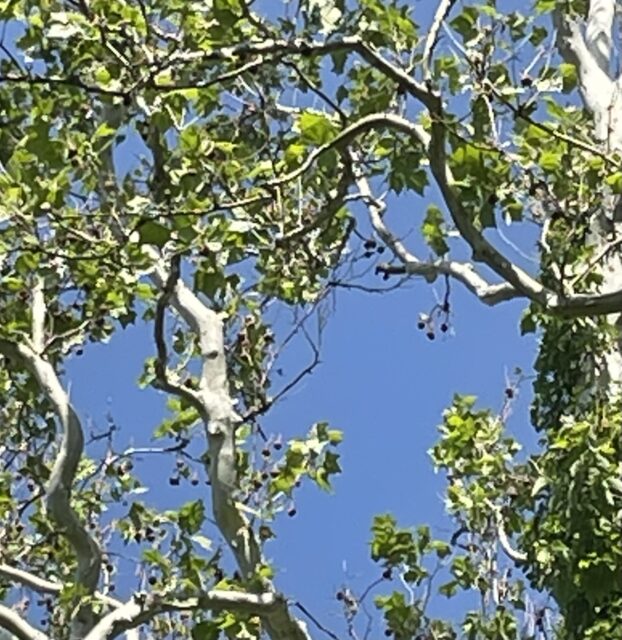
Unfortunately, I couldn’t find any of the fruit on the ground, but if you look at the above picture, you’ll notice little dark balls dangling off this sycamore tree. These burr-like balls contain the fruit, which come in the form of achenes.
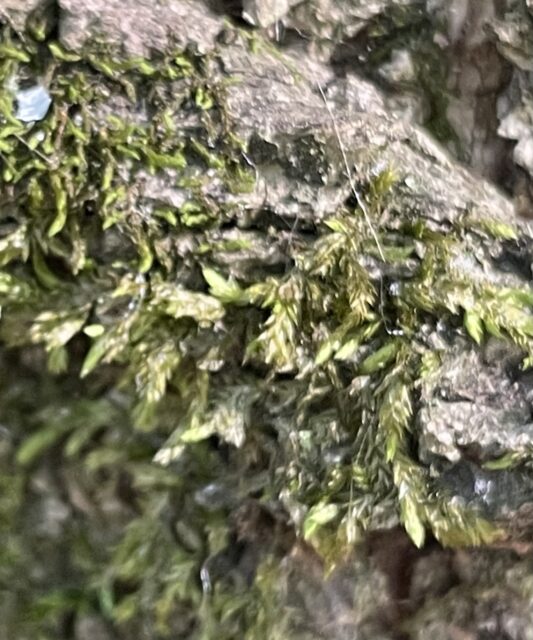
Platygeridium repens – Flat brocade moss

Lepraria finkii- Fluffy dust lichen
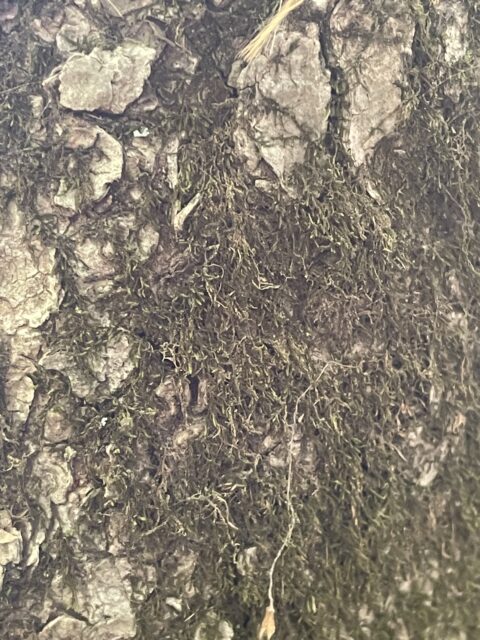
Anomodon attenuatus – Tree skirt moss
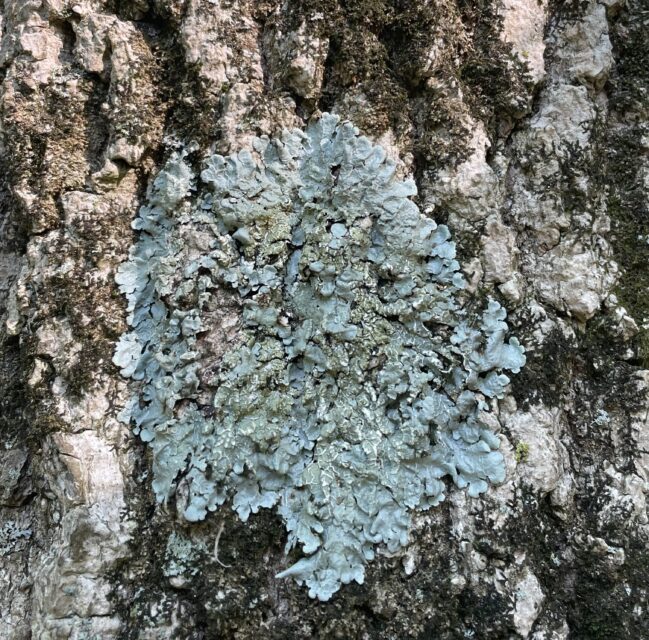
Flavoparmelia caperata – Common greenshield
